Tuareg Desert Blues & Saharan rock.
With Hoggar, Musiques des Touareg | Toumast | Tinariwen | Etran Finatawa | Mdou Moctar | Bombino | Imidiwen.
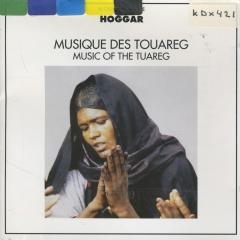 1- The name Tuareg probably comes from ‘Targa’, the name they themselves give to the Fezzan region in Libya. Many Tuareg tribes trace their origins to this region, or regions in northern Algeria and southern Morocco, especially the Tafilalt. From their language, Tamasheq, it can be concluded that the Tuareg at least had contact with Roman and Phoenician inhabitants of North Africa before they arrived in southern regions. The Tuareg have their own script – Tifinagh – which is directly derived from the Phoenician alphabet. In Mali, the Tuareg have a Latin-based alphabet. In the Sahara and Sahel, at the end of the 20th century, a music style of its own developed in bands that formed from the Tuaregs, or the nomadic Berber tribes that live in the North African desert area. Charming rhythms that sway like camels mix with meandering Arabic melodies and raw blues and rock guitars.
1- The name Tuareg probably comes from ‘Targa’, the name they themselves give to the Fezzan region in Libya. Many Tuareg tribes trace their origins to this region, or regions in northern Algeria and southern Morocco, especially the Tafilalt. From their language, Tamasheq, it can be concluded that the Tuareg at least had contact with Roman and Phoenician inhabitants of North Africa before they arrived in southern regions. The Tuareg have their own script – Tifinagh – which is directly derived from the Phoenician alphabet. In Mali, the Tuareg have a Latin-based alphabet. In the Sahara and Sahel, at the end of the 20th century, a music style of its own developed in bands that formed from the Tuaregs, or the nomadic Berber tribes that live in the North African desert area. Charming rhythms that sway like camels mix with meandering Arabic melodies and raw blues and rock guitars.
CD. Hoggar – musiques des Touarag.
LABEL: Chant du Monde (1994), code: LDX274974. VIDEO
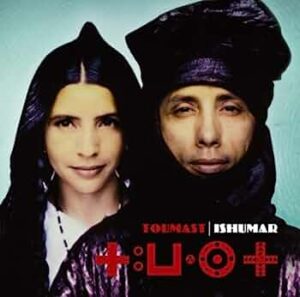 2- The duo Toumast.
2- The duo Toumast.
The word Ishumar was the name for the many Tuareg men in southern Algeria who moved from city to city in search of work. Most of them were refugees who had fought against the regimes of Mali and Niger. Because they were wanted, they crossed the border. Like the Tinariwen men, Moussa Ag Kenya, the founder of Toumast, was also an Ishumar. In 1993, Moussa was injured and left for France. There the guitarist met the producer Dan Levy and with him he recorded an album with nine songs that quickly get under your skin. The album Ishumar is bare and hypnotic, full of funky basses and sharp guitars.
CD. Ishumat – Toumast.
LABEL: Le Village Vert (2007), code: 5413356375879. VIDEO
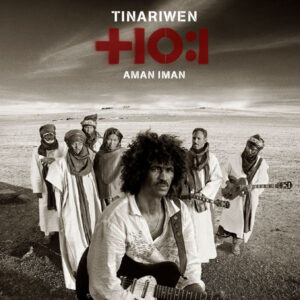 3- Tinariwen.
3- Tinariwen.
The turbulent history of the Tuareg, the nomadic people from the Sahara, is one of a long struggle against foreign rulers. The members of Tinariwen, founded in 1982, not only professed this struggle with words, but also joined the armed struggle against the government of Mali. After the 1995 armistice, the members decided to devote themselves full-time to their music careers and with success. Tinariwen was ‘discovered’ by a French booker, who brought the band to Europe for performances, after which a remarkable triumphal march followed. The sound of the band is as inaccessible at first hearing as the desert in which the band members grew up. The playing of the three guitarists has many similarities with the blues.
CD. Aman iman : Water is life – Tinariwen.
LABEL: Universal Records (2007), code: 00602498439913. VIDEO
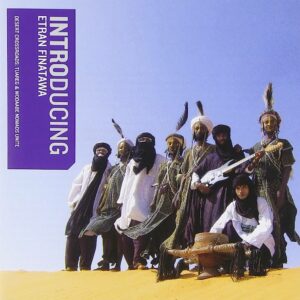 4- Etran Finatawa.
4- Etran Finatawa.
Niger is culturally very diverse as it is home to no less than eleven different ethnic groups. As a symbol of peace and reconciliation, musicians from two different nomadic tribes, the Tuaregs and Woodabe, united in the group Etran Finatawa. Special is their polyphonic vocals and absence of instruments. The veiled Touaregs, camel herders, use instruments such as violins and percussion for their repetitive songs. In Etran Finatawa, meaning “Stars of Tradition”, these traditional instruments are complemented by electric guitars. In a powerful, hypnotic style, the album Introducing Etran Finatawa performs songs about recognizable subjects such as cattle, survival, Islam, beauty, love and a camel race.
CD. Introducing Etran Finatawa – Etran Finatawa.
LABEL: World Music Network (2007), code: INTRO 10CD. VIDEO
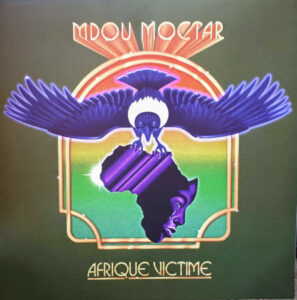 5- Mdou Moctar.
5- Mdou Moctar.
He belongs to the first generation of Turag and desert blues artists. But singer and guitarist Mdou Moctar only found worldwide recognition after his starring role in the Nigerian film Akounak Tedalat Taha Tazoughai. His album Afrique Victime is now released on the American Indie label Matador. With a classic rock band line-up behind him, Mdou Moctar has one leg in Turag music and the other in psychedelic American rock. The band gives him an enchanting basis for his serpentine guitar playing. That can be quite, sometimes almost Jimi Hendrix-esque. The vocals often consist of fierce chants (the rhythmic speaking or singing of words or sounds) of the entire band and raise injustice. It gives meaning to the raw and hypnotic desert rock of this special artist.
CD. Afrique victime – Mdou Moctar.
LABEL: Matador Records (2021), code: OLE1614CD. VIDEO
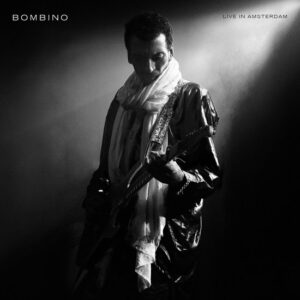 6- Bombino.
6- Bombino.
This album was recorded during his performance at the Melkweg in 2019. Bombino is one of the greatest guitarists and artists from the Sahara and Sahel region of Africa. Born in 1980 in a nomadic Tuareg family near Agadez, Niger, on the edge of the Sahara. When Bombino was just twelve years old, his family had to flee to Tamanrasset to escape the impending rebel violence. Bombino learned to play the guitar and in a short time he became a local legend, until eventually critics outside Africa started to appreciate his playing. In 2007, something tragic happens: two of his band members are murdered by the army of Niger. Regardless of life’s challenges, Bombino continues his mission to use music to spread love, understanding and the beauty of Tuareg culture around the world.
CD. Live in Amsterdam – Bombino.
LABEL: Partisan Records (2020), code: PTKF2188-2. VIDEO
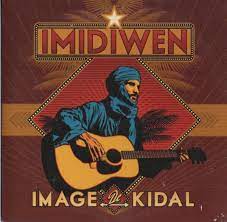 7- Imidiwen (friends) hails from the north of Mali, but because of the use of a number of unusual instruments, the group finds an original niche. Just listen to track 3: Coeur Déchiré, a song in which the combination of a fluttering clarinet, a driving guitar line and the compelling repetitive rhythms absolutely works. And so there is a surprise in every song, such as a hypnotic drum solo from track 4: Tamiditin Ouali and the gypsy brass-like horns in track 6: Appel à mes Soeurs.
7- Imidiwen (friends) hails from the north of Mali, but because of the use of a number of unusual instruments, the group finds an original niche. Just listen to track 3: Coeur Déchiré, a song in which the combination of a fluttering clarinet, a driving guitar line and the compelling repetitive rhythms absolutely works. And so there is a surprise in every song, such as a hypnotic drum solo from track 4: Tamiditin Ouali and the gypsy brass-like horns in track 6: Appel à mes Soeurs.
CD. Image de Kidal – Imidiwen.
LABEL: L’Autre (2012), code: 4IMDW501. VIDEO
Met dank aan:
![]()








